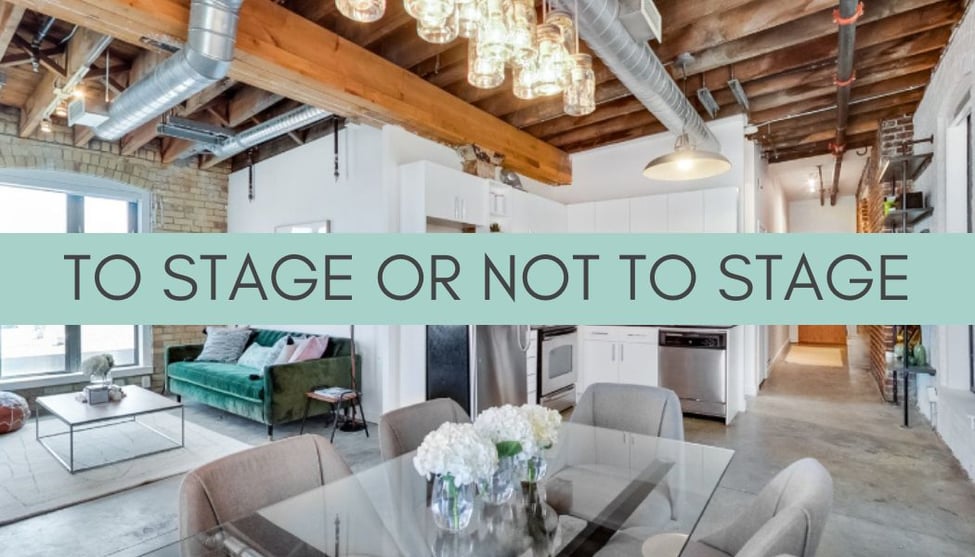We get asked this question a lot from clients eager to get their homes on the market: “Can staging my home really increase the sale price?” And we’ve heard it from some serious stunners too—like House & Home or Architectural Digest-level homes. But guess what? Even those homes needed staging. The reason might surprise you!
Let’s dive into how staging works and why it definitely helps boost that final sale price.
Even Beautiful Homes Need Staging
Here’s the truth: staging isn’t just about showcasing the latest trendy furniture. It’s about making the most of your home’s space and flow. So even if your home looks like it stepped out of a magazine, it was designed for you, and not necessarily for the buyer.
The problem? While your design might be fabulous, it can actually distract potential buyers from seeing themselves in the home. Instead, they might end up thinking things like:
Insecurity: “How will I ever keep up with this level of perfection? My couch is terrible compared to this!”
Confusion: “Wait, is that even a chair? How do you sit in it?”
Distraction: “OMG, is that an Adam Neate on the wall? Maybe it’s a print… I need to Google this.”
As amazing as your personal style might be, it can unintentionally throw off buyers. The goal of staging is to create a neutral yet inviting look that highlights your home’s space, light, and possibilities—without distractions.
The Purpose of Staging
Here’s the key: staging isn’t about your beautiful stuff, it’s about showcasing the home itself. We want buyers to have that emotional spark—the feeling that tells them, “This is the one!”
Staging helps:
Create an open, natural flow from room to room
Bring in more light
Optimize layouts for maximum appeal
Highlight the best features of your home
Create an aspirational (but not overwhelming) design
Boost curb appeal
Tackle any lingering DIY projects (because no one wants to deal with squeaky doors or chipped paint)
At the end of the day, staging is all about making buyers fall in love with the space and imagine themselves living there.
The Psychology Behind Staging
Staging works on a psychological level by creating a blank canvas, while still making the home feel warm and lived-in. Weird, right? But it works. You want buyers to have thoughts like:
“My grandma’s kitchen tools would look perfect here!”
“This is where I’ll sip my Friday night wine by the fire.”
“This would be the best playroom for the kids.”
“That view from my office? Incredible!”
Staging sets the stage for buyers to fill the space with their own ideas and dreams, making them feel like they’ve found home. And that’s when they’re ready to make an offer.
6 Psychological Strategies of Staging
We’ve broken it down into six key psychological strategies:
Balance of Furnishing & Blank Canvas
You want the home to feel lived-in, but also leave room for buyers to picture their own life in the space.Aspirational, Not Personal
The design should be aspirational—something buyers would want for themselves—but not so personal that they feel like they’re walking through someone else’s dream home.Appeal to the Senses
A home should smell like a home, not last night’s dinner or your dog. Simple, inviting smells (think baked cookies or freshly brewed coffee) can trigger positive emotional memories.Lifestyle Envisioning
It’s not just about furniture; it’s about lifestyle. Think: a table set for dinner, cozy blankets on the bed, a chair by the fire. Buyers need to picture living in the home.Functionality
Every room should serve a clear purpose, with intentional furniture placement that shows the room’s function and flow without feeling cramped.Let There Be Light
Natural light is a huge selling point. Open those curtains, highlight views, and make the home feel warm and bright with proper window treatments.
Just the Facts: Staging by the Numbers
Now, we love a good stat to back things up. According to the Real Estate Staging Association:
Staged homes spend 73% less time on the market than un-staged homes
85% of staged homes sell for 5% to 25% above listing price
While tons of factors affect the sale of a home, staging helps it stand out in a competitive market and stick in buyers’ minds. And we know from experience—it makes a difference!
The Benefits of Professional Home Staging
Because staging taps into buyer psychology, it’s best left to the pros. A professional stager (working with your real estate agent, of course!) knows exactly how to highlight your home’s best features, downplay any flaws, and create a welcoming vibe that appeals to your target buyers. Good staging will:
Make buyers fall in love with your home, even if there are some quirks
Eliminate small details that could scare off buyers (like creaky floors or missing cabinet knobs)
Neutralize any bold design choices that might turn buyers off
Get rid of clutter so the home feels spacious and organized
Present your home as move-in ready, with no work needed
There are also a few simple upgrades you can do yourself to boost appeal—like updating light fixtures, cleaning windows, and giving your landscaping a little love.
The Bottom Line
While the market ultimately dictates your home’s sale price, staging gives you a serious edge—especially when competition is fierce or the market is slower. It’s the key to making that all-important emotional connection with buyers, and it can lead to offers that go up to 25% above asking.
So, does staging really work? 100%, yes. If you want to get top dollar for your home, staging is a must!

